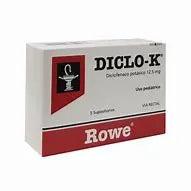Diclofenac: Relieving Pain and Inflammation
Diclofenac is a nonsteroidal anti-inflammatory drug (NSAID) used to treat mild-to-moderate pain and alleviate symptoms of arthritis, such as osteoarthritis and rheumatoid arthritis. It helps reduce inflammation, swelling, stiffness, and joint pain. This medication is also effective in treating ankylosing spondylitis, a type of arthritis that affects the spine, and other painful conditions like menstrual cramps.
In addition to its use in arthritis, diclofenac is also prescribed for acute migraine attacks in adults. However, it does not prevent or reduce the frequency of migraine attacks.
Diclofenac works by inhibiting cyclooxygenase (COX)-1 and COX-2 enzymes, which are responsible for producing prostaglandins that contribute to pain and inflammation. It is available in various dosage forms, including capsules, tablets, and a powder for solution.
While diclofenac can provide significant relief from pain and inflammation, it is essential to use it under the guidance of a healthcare professional. This medication does not cure arthritis and will only help as long as you continue to take it. Additionally, diclofenac can increase the risk of gastrointestinal ulcers, so it is often used in combination with misoprostol to protect the stomach lining.
By understanding how diclofenac works and its potential side effects, you can make informed decisions about its use in managing your pain and inflammatory conditions. Always consult with your doctor before starting any new medication.






Reviews
There are no reviews yet.